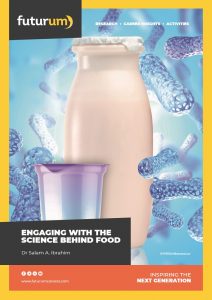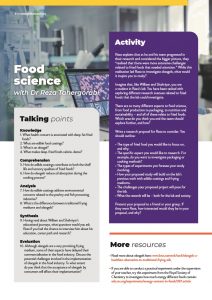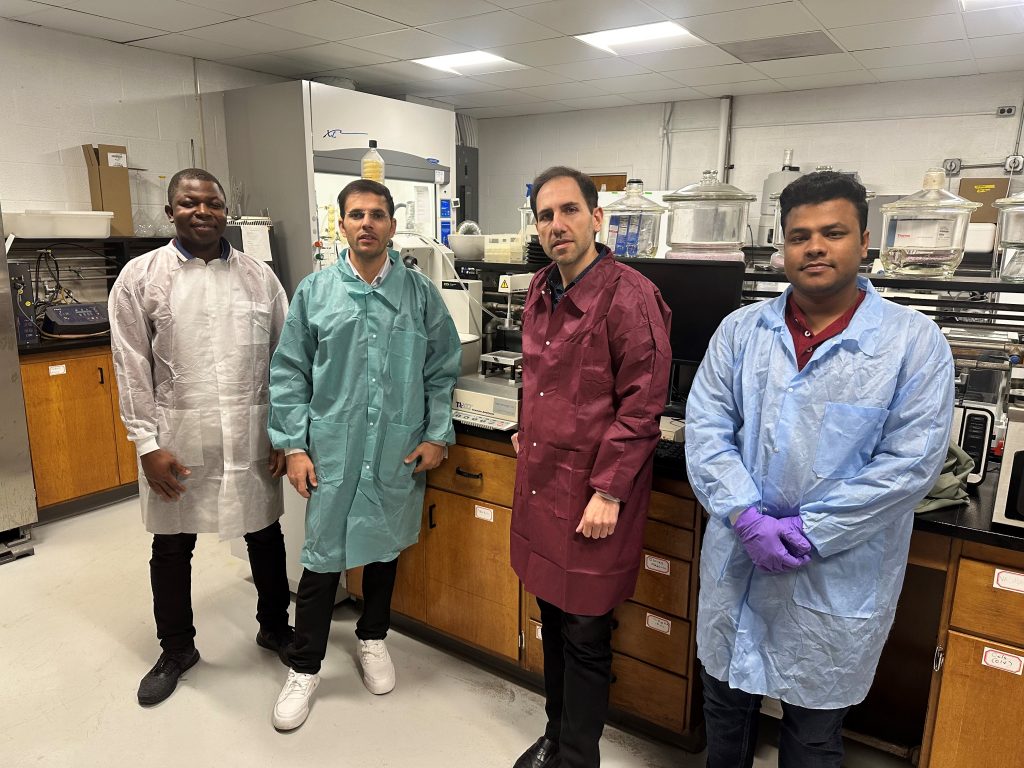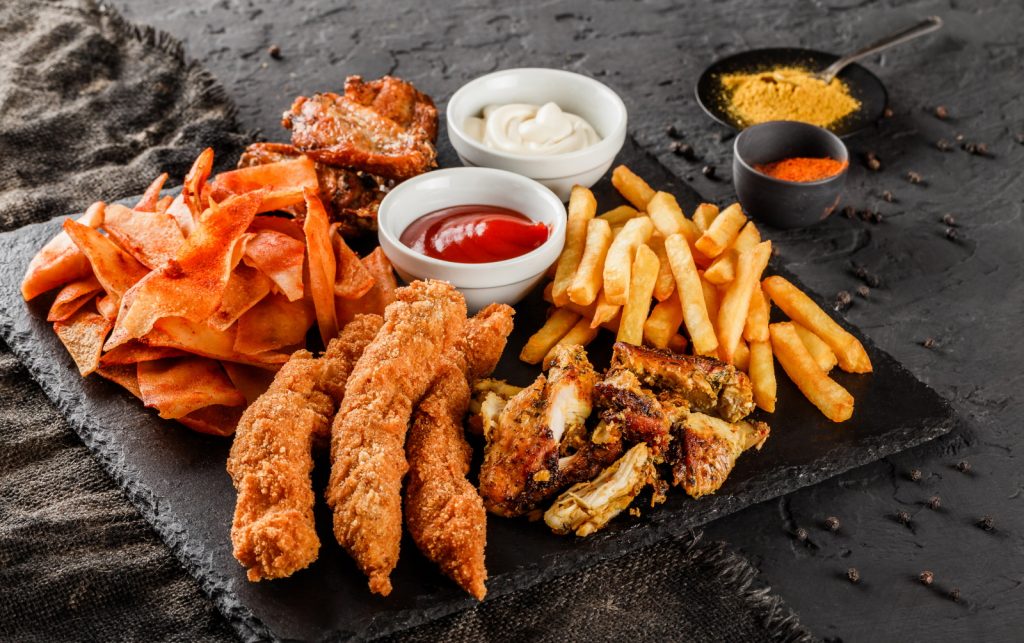How can we reduce fat in fried foods?
Deep-fried food is immensely popular. Although embraced worldwide for its deliciousness, its appeal is tinged with health concerns stemming from the significant absorption of oil during the frying process. Dr Reza Tahergorabi, an associate professor at North Carolina Agriculture & Technical State University in the US, is exploring oleogel as a new frying medium to reduce the fat content in fried foods.
Talk like a food scientist
By-products — leftover or secondary materials generated during the manufacturing or processing of, in this instance, food
Frying medium — the substance, usually oil, in which food is cooked to achieve frying
Gelling agents — substances, such as natural waxes, that when added to a liquid, bring about a transformation from a liquid to a gel or a semi-solid state
Oleogel — a gel formed by combining oil with a gelling agent
Oxidative stability — the ability of food to resist deterioration due to reactions with oxygen
Shelf life — the duration for which a food product remains safe to eat
Crispy and golden, deep-fried foods can be irresistibly delicious. Unfortunately, eating them in excess is very bad for our health. “There are significant health and quality issues related to deep-fat fried foods,” says Dr Reza Tahergorabi, an associate professor at North Carolina Agriculture & Technical State University. “The high oil content means they are calorie-dense and can contribute to weight gain and obesity if consumed in excess.”
According to the World Obesity Federation, it is estimated that by 2035, over 4 billion people – more than half the world’s population – will be obese. To help combat this alarming rise in global obesity rates, Reza and his team are developing innovative solutions, from edible food coatings to oleogel-based frying mediums. They aim to reduce the fat content of fried foods, while maintaining the taste and texture that make them so enjoyable.
What are edible food coatings?
Edible food coatings are thin layers of ‘protective’ material applied to the surface of various food items. These coatings serve a dual purpose: firstly, they act as barriers against factors like air and moisture, extending the shelf life of the product. Secondly, they contribute to maintaining the original texture and flavour of the food. These coatings are crafted from diverse natural substances such as proteins, carbohydrates and fats, and sometimes use by-products of food processing that might otherwise go to waste. “The coating used in our previous research is distinctly protein-based, using chicken and fish processing by-products as its principal components,” explains Reza. “Its unique feature lies in its ability to function as a protective barrier, significantly reducing the uptake of oil in fried food items while meticulously preserving their sensory qualities.” Therefore, these coatings not only help reduce fat in fried food and meet the demand for healthier options, but they also make sure fried products are better for you, without losing their taste and quality.
What are the benefits of edible coatings?
Edible coatings can benefit consumers by reducing fat in fried foods, potentially mitigating health issues like obesity, while simultaneously contributing positively to the environment. “From an environmental perspective, this coating addresses the growing concerns surrounding the disposal of by-products generated in the poultry and fish processing industries,” says Reza. By using by-products that would otherwise become waste, these coatings promote sustainability and reduce the environmental footprint which is usually associated with the processing of high-fat fried food. “The dual focus on health-conscious choices and ecofriendly practices positions this coating as a significant step towards a more balanced and responsible approach to food consumption and production,” explains Reza, highlighting the revolutionary potential of this coating for the fried food industry.
From edible coatings to oleogels
“As we delved deeper into this field and considered the broader implications, we realised that there were more extensive challenges related to fried foods that needed attention,” says Reza. “While coatings can reduce fat uptake, they do not address the issue of the frying medium itself, which remains a significant contributor to the fat content in fried products.” Taking this into consideration, Reza and his team decided to switch their focus from edible coatings to oleogels. Oleogels, a fascinating innovation in the culinary world, are gels formed by combining oil with a gelling agent, transforming liquid oils into semi-solid or solid structures. These gels have the unique ability to reduce oil absorption during cooking processes. The magic lies in the gel structure itself, which acts as a clever barrier, entrapping and holding the oil, rather than allowing it to be absorbed by the food.
“Our current research builds on our understanding of the role of coatings in fat uptake reduction and extends this knowledge to address the broader challenge of reducing oil absorption during frying,” explains Reza. “By shifting our focus to frying mediums, we are taking a more holistic approach to tackle the issue of excessive dietary fat intake in fried foods.” This will be key for developing healthier food options that not only cater to consumer preferences but also contribute to the global effort to combat rising concerns related to obesity and associated health issues. By exploring innovations in frying mediums, such as oleogels, Reza and his team offer solutions that go beyond surface-level interventions, potentially revolutionising the way fried foods are prepared and consumed.
What has the team found so far?
Reference
https://doi.org/10.33424/FUTURUM459
“There are significant health and quality issues related to deep-fat fried foods,” says Reza. To reduce the fat uptake in fried foods, Reza and his team have researched edible coatings and frying mediums.
© kazoka/Shutterstock.com and
© Jukov studio/Shutterstock.com
© metamorworks / Shutterstock.com
Oleogels show great promise as frying mediums due to their impressive qualities, including the ability to reduce fat in fried foods, sustainability, and the preservation of texture and taste. “In our study, we successfully structured canola oil into oleogels using wax from the carnauba plant, and these oleogels demonstrated remarkable potential in reducing fat uptake and enhancing the oxidative stability of deep-fried chicken breast samples,” explains Reza. More specifically, when compared to regular canola oil, the chicken fried in the oleogel not only contained much less fat but also demonstrated enhanced freshness over time and improved texture. These findings herald a promising shift in the realm of fried food preparation, pointing towards a healthier and more sustainable culinary future. As oleogels emerge as potential game-changers, their ability to simultaneously address dietary concerns and enhance gastronomic experiences opens up exciting possibilities for reshaping the way we indulge in fried delights.
Reza’s goal is to show that oleogels have the potential to be used as edible coatings, eventually protecting against harmful substances that can form during frying. “Our ongoing work will continue to explore the capabilities of oleogels in mitigating the formation of undesirable and toxic compounds during deep-fat frying, leading to innovative and healthier solutions for the food industry and consumers,” says Reza. Through their innovation, Reza and his team are helping to redefine fried food, offering a healthier and safer choice for consumers, while contributing to the evolution of sustainable practices in the food industry.
 Dr Reza Tahergorabi
Dr Reza Tahergorabi
College of Agriculture and Environmental Sciences, North Carolina Agriculture & Technical State University, USA
Field of research: Food science, food product development
Research project: Exploring oleogel as a new frying medium to reduce the fat content of fried foods
Funder: US Department of Agriculture (USDA)
This work was funded through the National Institute for Food and Agriculture of the United States Department of Agriculture, Project No. NC.X-311-5-18-170-1 and 1023325.
About food science
Food science is the study of the physical, chemical and biological aspects of food. It involves understanding how food is produced, processed, preserved and distributed. Food scientists work to ensure food safety, quality and nutrition, while developing and improving food products.
“One of the significant challenges is the ever-evolving nature of the industry. Researchers must adapt to changing consumer preferences, emerging technologies and sustainability concerns,” says Reza. This adaptability is crucial and reminds food scientists to not only stay updated on the latest trends and technological advancements but also collaborate across disciplines (e.g., nutrition, technology and environmental science) to develop innovative solutions for the everchanging demands of the industry.
Despite the challenges, food science is a very rewarding career. Working in this field can expose you to cutting-edge technologies, such as biotechnology, in which problems of food supplies, malnutrition and environmental issues are being addressed. “Ultimately, the field of food science offers the satisfaction of making tangible contributions to a fundamental aspect of human life, our relationship with food, while continually embracing innovation and improvement”, explains Reza.
Looking to the future, the next generation of food scientists will find a wealth of research opportunities awaiting them in this rapidly evolving field. “These include enhancing alternative protein sources, ensuring food safety, reducing food waste, and contributing to a healthier and more sustainable global food landscape, impacting nutrition, security and the environment,” says Reza.
Pathway from school to food science
• “In high school and beyond, a focus on biology, chemistry and mathematics is essential,” says Reza. If your school also provides courses in food science, these classes will provide foundational knowledge about the science behind food.
• Reach out to a nearby food testing laboratory or a local food company. It might offer opportunities for shadowing or short-term internships.
• “In college or university, pursuing a bachelor’s degree in food science, nutrition, biology, chemistry or a related field is an excellent starting point,” says Reza. “Additionally, courses in microbiology, biochemistry, food engineering and food safety provide a well-rounded education for a successful career in food science.”
• Summer internships provide hands-on experience in food science. “North Carolina A&T State University’s Research Apprenticeship Program (RAP) is designed for high school students,” says Reza. “The students work under the direction of top-notch research scientists and conduct independent research projects.”
Explore careers in food science
• “Once you have obtained a degree in food science or a related field, gain practical experience and explore career opportunities through internships,” advises Reza.
• “Join professional organisations such as the Institute of Food Technologists,” says Reza. “Stay informed by reading food science journals and exploring relevant websites and blogs. Some useful websites include Food Technology magazine, Food Safety News, and Food Business News.” These provide a variety of learning resources which can keep you informed about the latest trends, research findings and innovations in the food science.
• According to PayScale, the average annual salary for a food scientist in the US is $72,000.
Meet William

William Oyom Sikapa
Postgraduate student, College of Agriculture and Environmental Sciences, North Carolina Agriculture & Technical State University
Research interest: Food science
I was inspired to pursue food science research after an undergraduate internship with the Food Research Institute (FRI) and Anheuser-Busch InBev SA/NV, a brewing company in Ghana. An internship is a great way to learn about an industry and meet people with similar research interests to you.
Adaptability and resilience are the two most appropriate terms to sum up my academic path. Even though I tend to be proactive, a few obstacles and positive human interactions have been essential to my scientific journey.
Dr Tahergorabi served as a co-advisor during my master’s study in China, which strengthened our relationship, resulting in my current role as his PhD student.
In Dr Tahergorabi’s lab, I double up as a graduate research assistant and a lab manager. I conduct experiments, collect and process data for conference presentations and publications, and oversee the inventory and maintenance of lab equipment, chemicals and supplies. There is always lots to do!
Our research on oleogels has enriched my knowledge. It has shown me that even simple techniques can have meaningful impacts on human lives. I have also published a research paper and attended a several conferences through this work.
My proudest career achievement, so far, has been receiving the best graduating graduate student and thesis award. Looking to the future, I am committed to working as a food science researcher – it’s a field I’m passionate about.
William’s top tip
Understand who you want to become, stay obedient and strive towards your goals.
Meet Shahriyar

Shahriyar Valizadeh
Postgraduate student, College of Agriculture and Environmental Sciences, North Carolina Agriculture & Technical State University
Research interests: Edible films and coatings, food packaging, nanotechnology, microbiology
I’m driven to study food science by the profound influence of food on our health. My goal is to raise awareness about mindful eating for better health and empower people to make informed dietary choices.
I joined Dr Tahergorabi’s lab because our research interests align perfectly. His expertise in food science and our shared focus on promoting healthy diets made it a natural fit.
My research’s standout moment is finding a method to lower fat absorption. This discovery could combat weight gain, heart issues and obesity, aligning with our aim for healthier outcomes.
I hold a patent for a biodegradable food packaging material, aiming to reduce plastic usage and help the environment. My published papers reflect my commitment to impactful research and sustainability in both academia and my career.
My ambition is to become a food and nutritional sciences professor. I’m passionate about promoting healthy diets through research and education, aiming to positively impact society by sharing knowledge with students.
Shahriyar’s top tips
1. Follow your passion, stay ethical in research, and focus on aiding healthier lives.
2. Keep learning in this evolving field, and remember the impact of food on us all.
3. Embrace the responsibility to contribute to people’s well-being.
Do you have a question for Reza, William or Shahriyar?
Write it in the comments box below and Reza, William or Shahriyar will get back to you. (Remember, researchers are very busy people, so you may have to wait a few days.)

Learn more about food science research at North Carolina Agriculture & Technical State University:
www.futurumcareers.com/engaging-with-the-science-behind-food









0 Comments